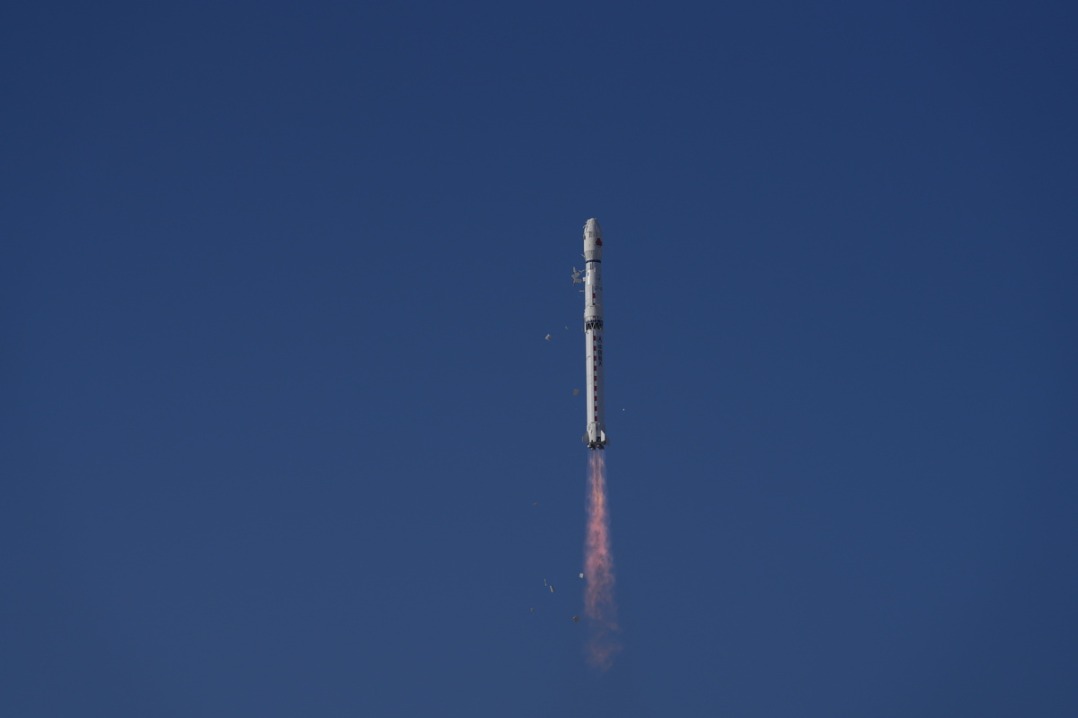China begins to flight-test new-generation manned spacecraft


China has begun to flight-test its new-generation manned spacecraft that will be used to serve the country's future space station and lunar landings, according to the China Manned Space Agency.
The new spacecraft's first prototype was lifted into low-Earth orbit during the maiden mission of China's Long March 5B heavy-lift carrier rocket on Tuesday evening from the Wenchang Space Launch Center in South China's Hainan province, the agency said in a statement sent to China Daily.
It said the flight was intended to verify key technologies and equipment for the new spaceship, including heat-resistance, control and recovery devices, adding the test results will be used for further improvements.
The statement noted that once put to formal service, the new manned spaceship will have world-class designs and technologies. It will feature high reliability and flexibility, and multiple functions, as well as reusability.
It will consist of two major parts – a re-entry module that will house astronauts and control the entire craft during a spaceflight, and a service module that will contain power and propulsion systems.
The new spaceship will have a length of nearly 9 meters, a diameter of 4.5 meters and a liftoff weight of more than 20 metric tons.
It will be tasked with serving the construction and operation of China's future space station, as well as the country's manned lunar missions that are being planned by scientists, the agency explained.
Since October 2003, when China carried out its first manned space mission to put Yang Liwei on a 21-hour journey around the mother planet in the Shenzhou V spacecraft, the nation has conducted six manned spaceflights with its Shenzhou series, which totaled 68 days and orbited Earth 1,089 times.
Chinese astronauts have travelled more than 46 million kilometers in space, performed extravehicular activities, conducted several extended missions inside the Tiangong I and II space labs, and delivered a 40-minute lecture from space that was watched by more than 60 million students in about 80,000 schools.
- Stanford University economist praises progress in China's rural health system
- China's Red Cross boasts 3.5m registered volunteers and 34,000 service organizations
- Chinese gamer recreates Old Summer Palace in Minecraft
- Taiyuan ski resort reflects thriving ice-snow economy
- Lhasa's dancing yak mascots become online sensation
- China's postal services deliver 12.9% growth in Jan-Nov





































